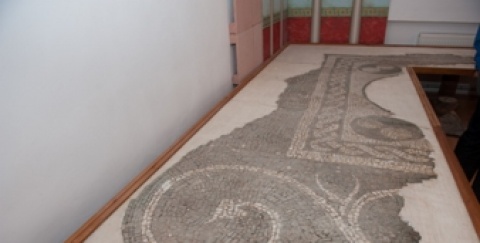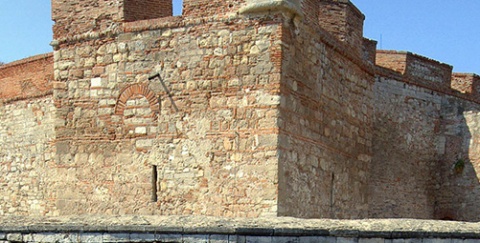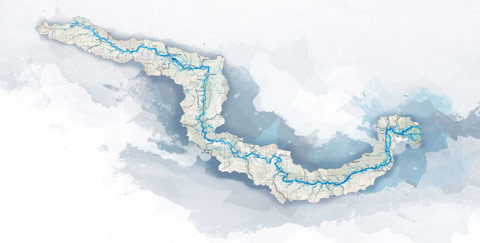
The settlements around Ruse (also: Rousse) on the Bulgarian banks of the Danube date back to Neolithic times. Later, it was a Thracian settlement that was taken over by the Romans and turned into a Roman naval centre under Emperor Vespasian (70 AD). The Roman fortress, named Sexaginta Prista was only a part of a major fortification system along the river. Its name is a combination of Latin and Greek words: sexaginta, meaning 60 in Latin, and pristis, a Greek word for a special river guard ship. This “city of 60 ships” became a major river port with anchoring berths and wharfs for the famous Roman Imperial Danube Fleet, which moved over from Noviodunum ad Istrum (today: Isaccea, Romania) and controlled and guarded the entire economic and military traffic between the Black Sea, the Danube Delta and the Iron Gates of the Danube. The Danube Limes road was also of great importance, connecting Singidunum (today: Belgrade, Serbia) with the Danube Delta. It is estimated that 600 soldiers in total were stationed in this fortress. The fortress is not far from the modern-day city centre. It is a part of the Regional History Museum, which houses some of the artefacts found in this area and in the Roman castle Yatrus on the Danube. The defence walls of the fortress are still visible, and so are the tower and the barracks, while some artefacts (inscriptions, sculptures, tombstones) are kept in a German WW 2 bunker. The first discoveries on this location were made by an Austro-Hungarian, Felix Philipp Kanitz, in the 19th century. An inscription indicates that Sexaginta, destroyed most likely by the Goths in 250 AD, was rebuilt and extended under Emperor Diocletian. The port was also known as Pristis and Pristapolis. It was destroyed at the end of the 6th century AD by the Avars and/or Slavic tribes.
When visiting the Regional History Museum in the Battenberg Palace, wine enthusiasts should have a look at the famous Borovo Silver Treasure (383–359 BC), a ritual wine set of five gold-plated silver items, discovered in 1974. The set indicates the rich and long tradition of viniculture in the area, before and during the Roman times. In 2006 the museum added a bronze helmet (4th–3rd century BC) to its collection, which probably belonged to an officer in the army of Alexander the Great.
Ruse (population: 150,000) is also famous for the bridge over the Danube (1954) connecting Ruse (Bulgaria) with Giurgiu (Romania). Until 2013, when a new bridge was opened in Vidin, it was the only one to cross the Lower Danube. Ruse is one of the most beautiful towns in Bulgaria, also dubbed Little Vienna, because of its Neo-Baroque and Neo-Rococo architecture (19th–20th century) and its many museums. Visit the birthplace of Elias Canetti, the winner of the Nobel Prize for Literature (1981) and the nearby rock-hewn churches of Ivanovo, a UNESCO World Heritage Site.
DANUBE.TRAVEL has no control over the website content generated by users and/or visitors, neither such content represents a statement, opinion, recommendation or rating by DANUBE.TRAVEL. For further information please refer to DANUBE.TRAVEL – General Website Terms and Conditions of Use.
Places near this location
Where to stay
What to do
Roman Fortress Sexaginta Prista and naval station
The remains of this ancient Roman port and fortres...
Roman Fortress Sexaginta Prista and Naval station
Used as a naval station from the 1st to 7th centu...
 EN
EN DE
DE










